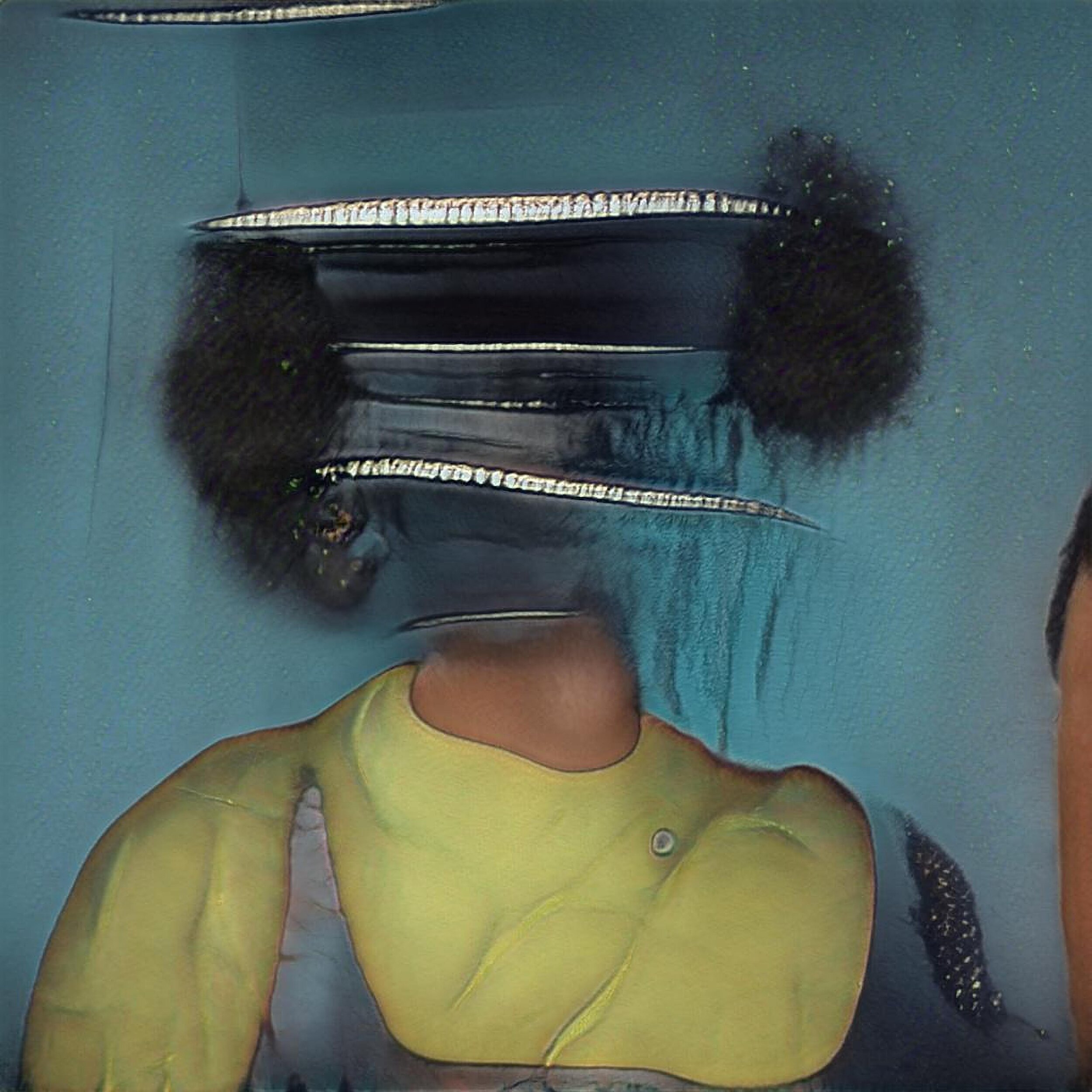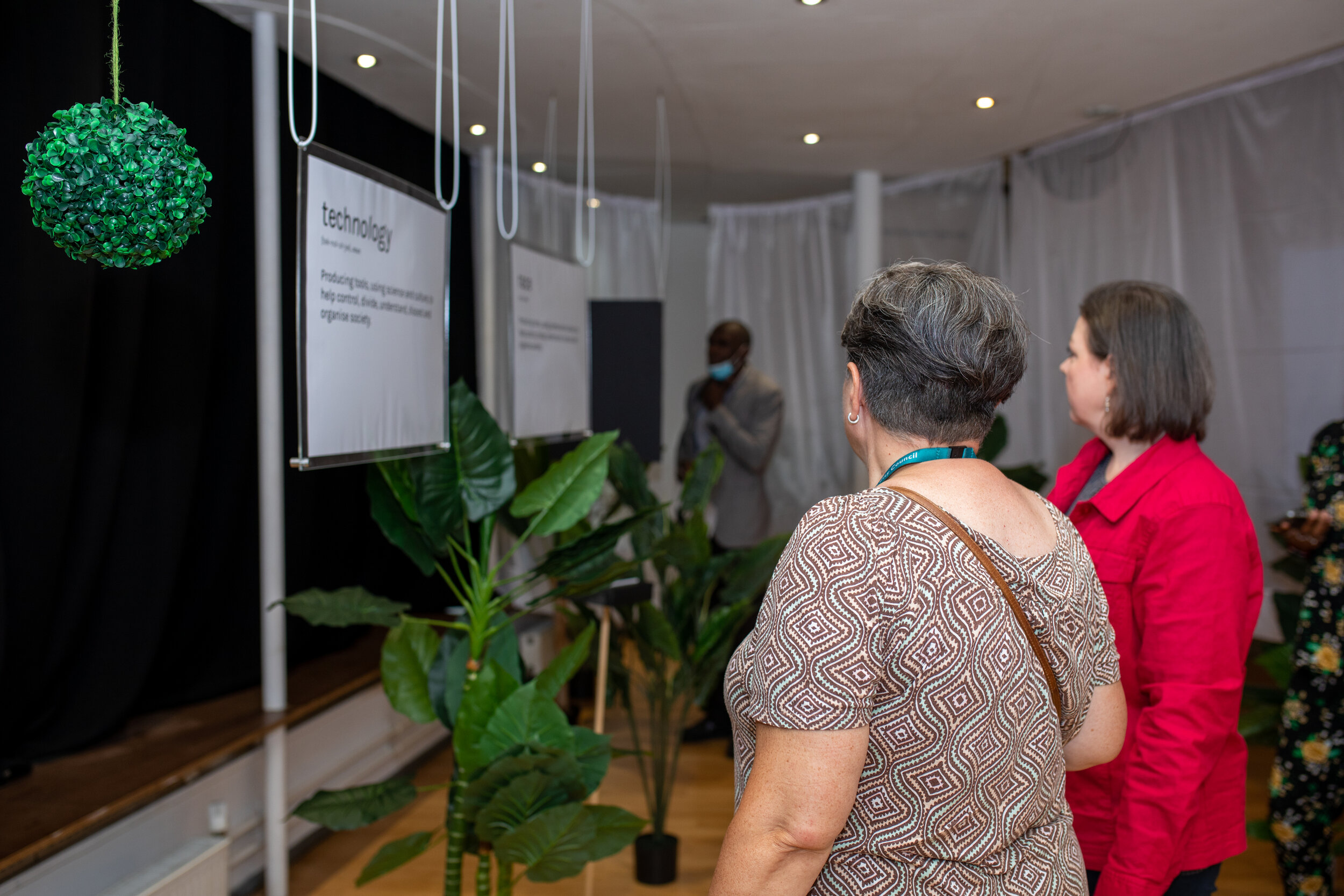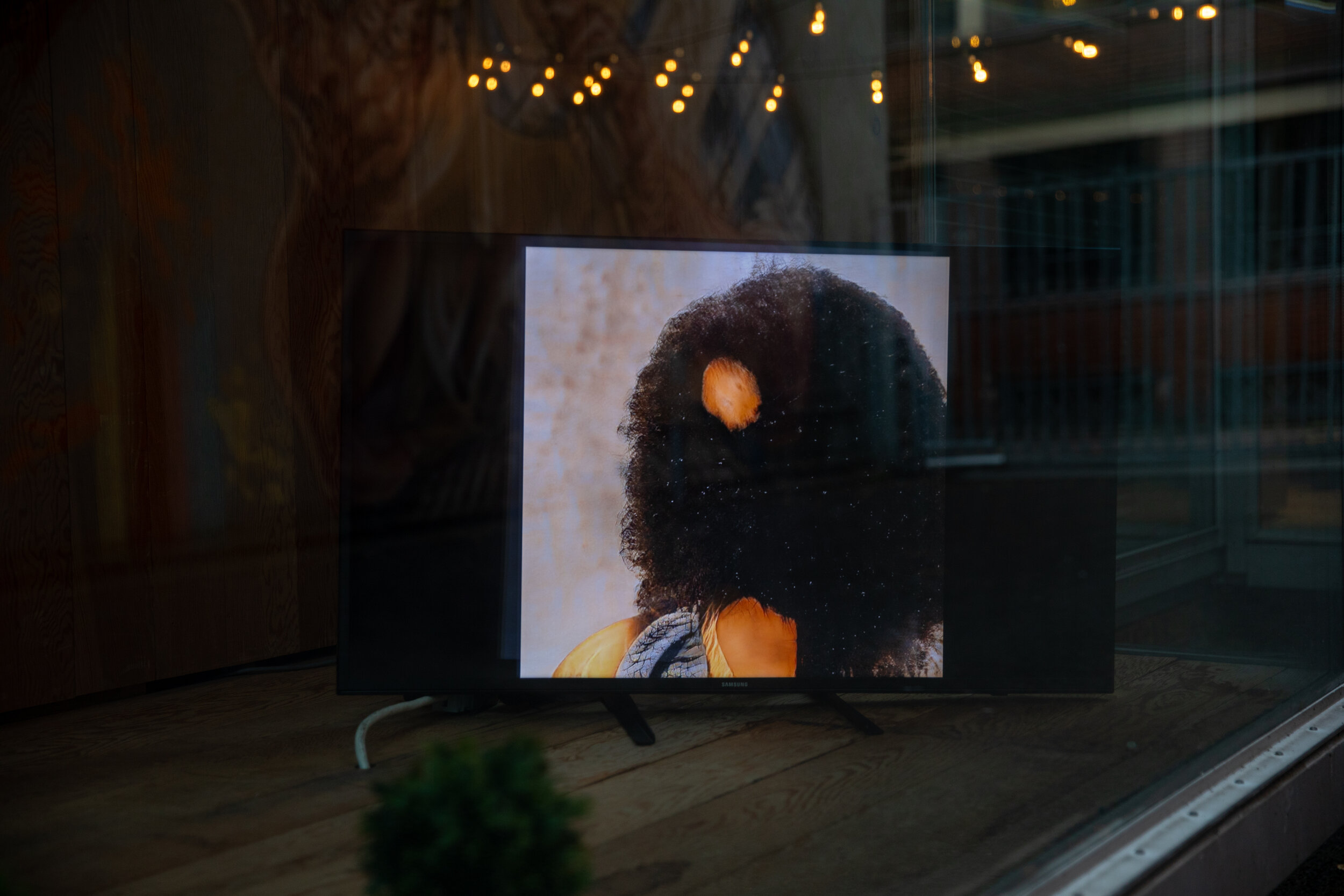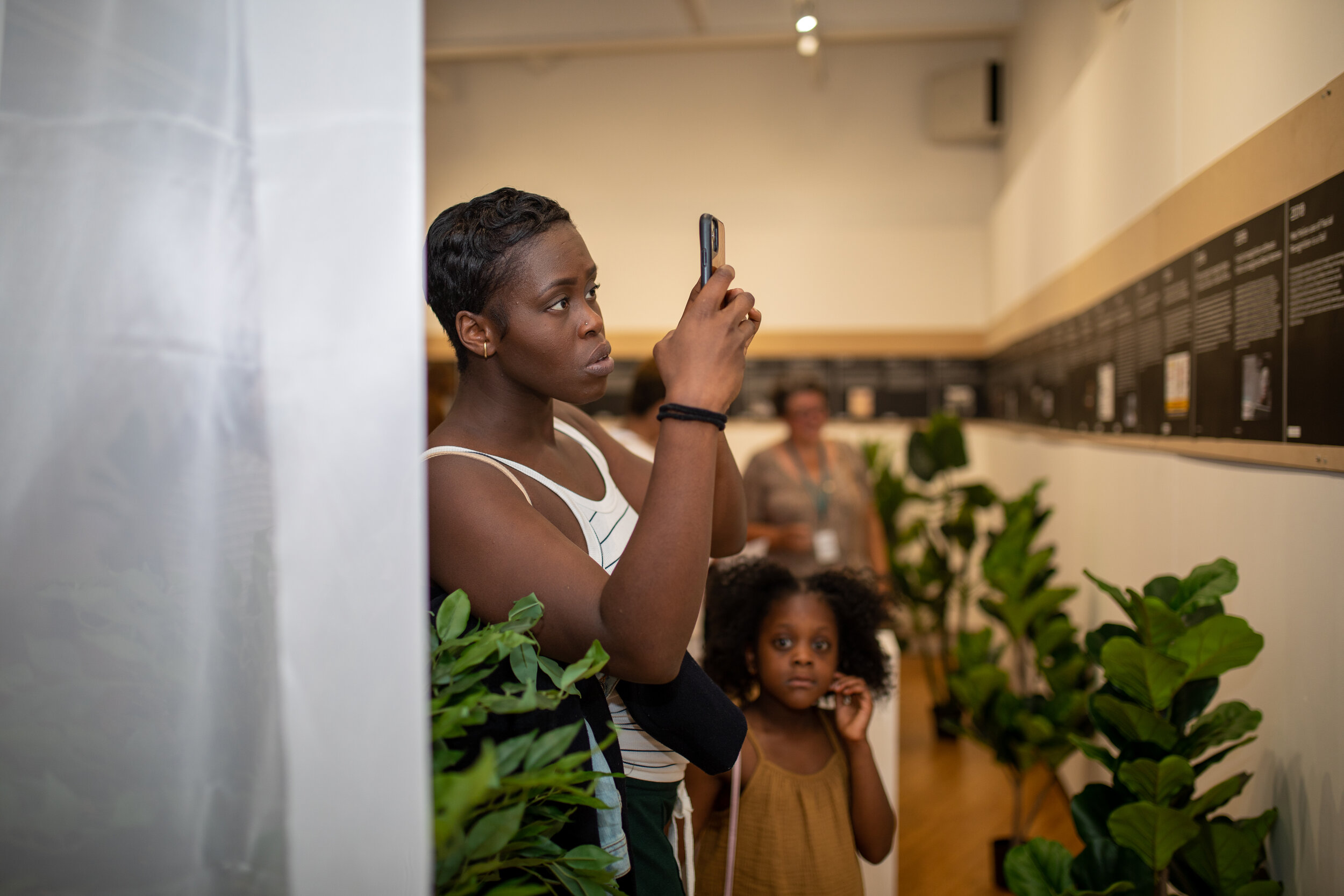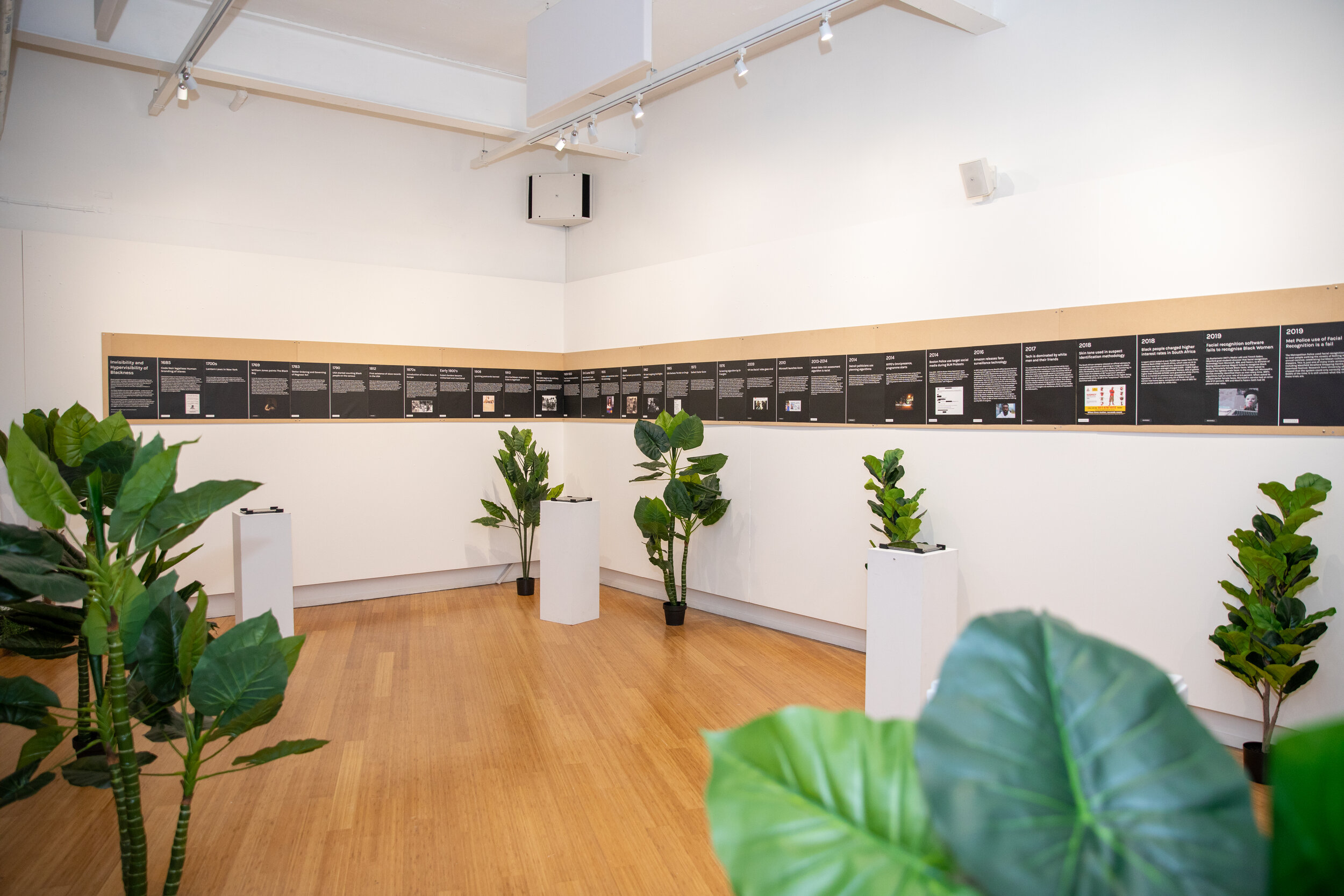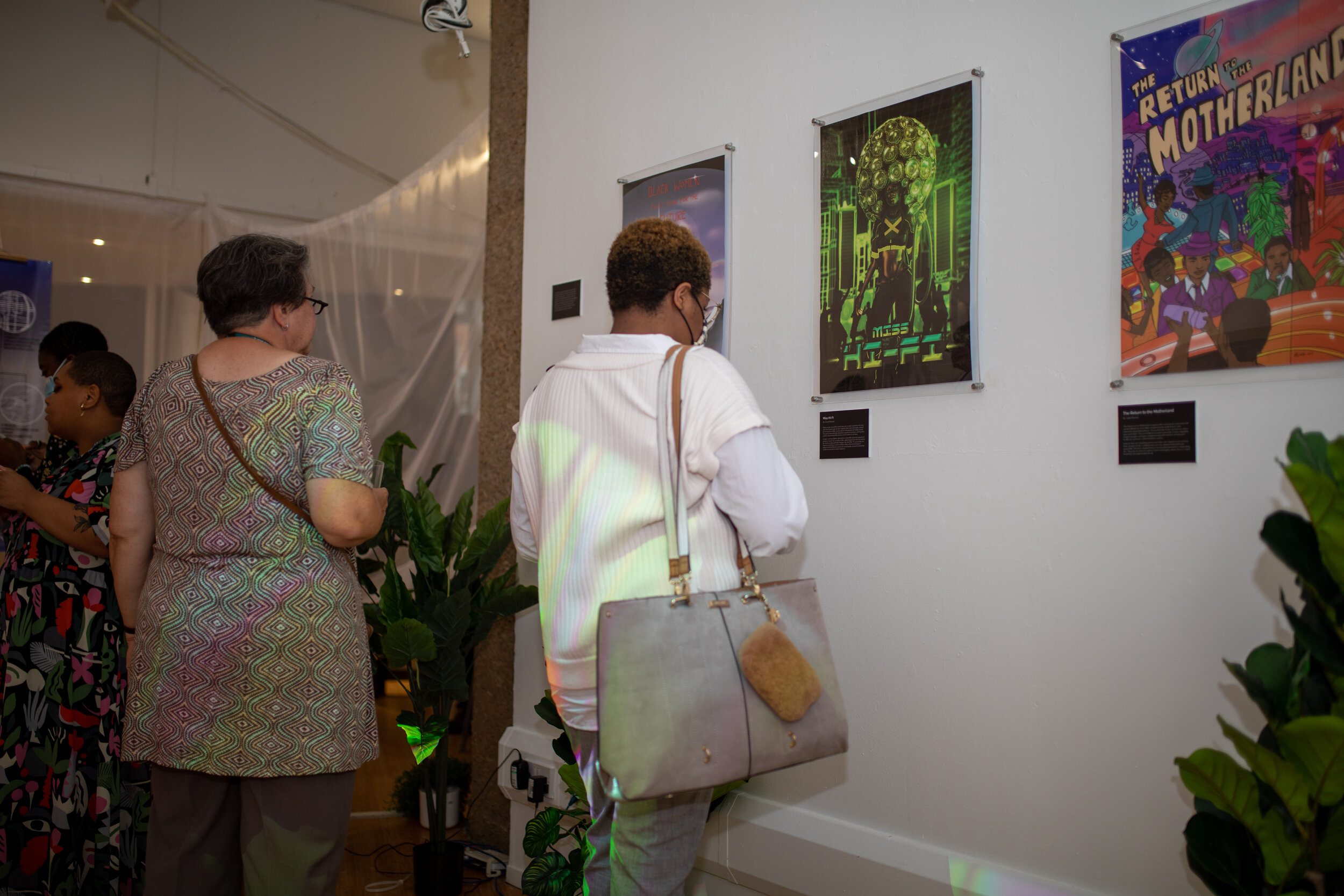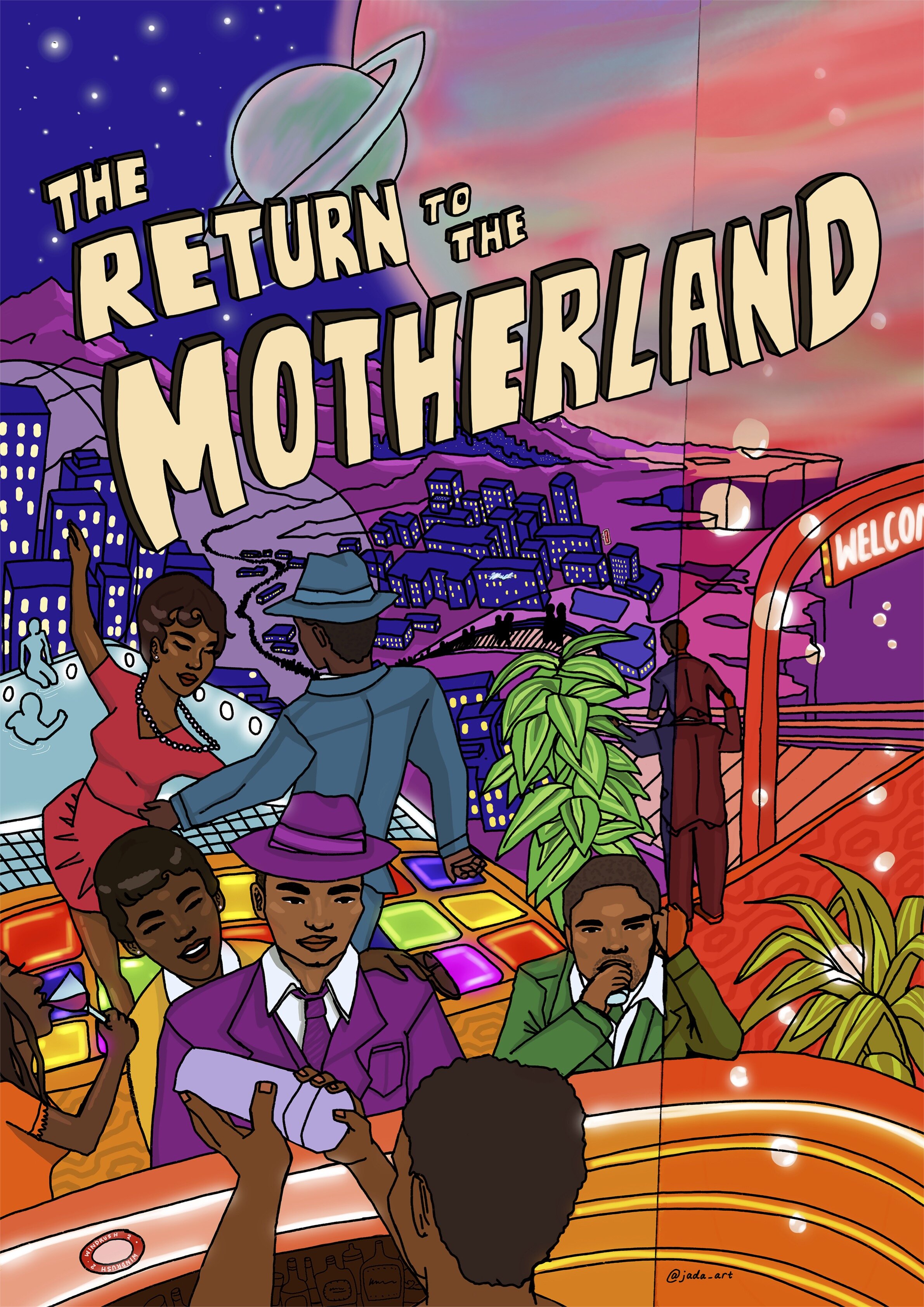This Machine is Black - Identity 2.0 on Race and Tech
This Machine is Black is the latest exhibition by creative tech duo Savena and Arda of Identity 2.0. Born from a conversation three years ago, when both women shared their frustrations about how non-white people exist within the tech world, they decided to host a one night pop-up exhibition, “we wanted to just get all our thoughts out into the world in a space that was accessible, because what we found was that when we try to learn about these things [tech and digital identity] you need to understand the language they [people who occupy the tech space] were talking in. If you don't understand the language, you won't be able to figure out what's happening.” Whether they realise it or not, everyone has a digital identity and therefore everyone should understand what it means to live online. For Identity 2.0 they felt the best way to do so was through art, “art can spark conversations, more than anything else. You don't really need to be from a certain background to engage with art, we wanted to create that open space, it's fun and engaging and it gets people talking. Panel talks are great, the research papers are also great, but you limit the audience that can reach, but through art you expand that audience a lot more.” Since their first conversation that took place over dinner and an episode of Gossip Girl, their platform has taken off, from digital exhibitions, web series’ and a zine titled The Messy Issue to sponsorships and workshops. Savena and Arda have been busy exploring the dense topic of tech in their latest exhibition, looking at why it’s essential for people to understand their existence and right within it.
Looking at the title of the exhibition, This Machine is Black, it’s obvious that it has been named with intention. Savena noted that Black people have often been treated as machines, a piece of equipment, the hidden labourers, “You never see the actual effort or Black people who have been sacrificed to be able to make a piece of work. So for one it is really important for us to be loud and clear with what it is.” Arda then explained how Black peoples' erasure for AI and racial biases in technology was also reason for their title questioning “What if that wasn't the case? What if the data did include us? That's how we felt about This Machine is Black.”
Attendees will experience the exhibition via four themes in the order of Deep Fakes, Surveillance and Privacy, Afrofuturism and Abolition. “The pieces we have in it are mixed media. In Surveillance and Privacy we have an interactive timeline dating back from 1685 to now, from when Black people were hyper visible and when they were completely invisible, because people tend to live in this paradox as well, so we try to use tech in that way. In Afrofuturism we’ve projected digital art onto the leaves of our plant to make people really feel like they're in this sci-fi, futuristic space. We also have some audio pieces, in Deep Fake we've interviewed two Black blind women about their experiences with race to really kind of take away this idea that people “don't see colour” because race is so much more than that. And then we have just more of a collaborative approach in Abolition, where we're using whiteboards and sticky notes for people to write down their tools of abolition together as a community. It's a mixture of static pieces and interactive. We want it to feel immersive.” Their exhibition will also feature a reading corner, where resources they’ve learnt and been inspired from will be of access to the public, alongside comic books from Black and Brown creatives.
The interactive space is inspired by something completely offline - a garden. Which is in turn linked to French philosopher Michael Foucalt’s concept of Heterotopias. Foucalt is known for his influential work titled Discipline and Punish: The Birth of the Prison, looking at how surveillance and power works in society, especially in relation to the prison system. Heterotopias are essentially spaces which are paradoxes that don't comply with other societal roles. This is where Identity 2.0’s use of a garden to present This Machine is Black steps in, because although a garden is perceived to be natural as Savena explains “it's actually artificial and man made because everything that is placed by a person is put in place to give the illusion of naturalness. And that, in itself, is a great comparison to how we talk about race, thinking about it as a natural thing that evolved, when it’s not, it’s a man-made construct that we put in place to control and have power over people. It’s also similar to how we talk about AI and technology. People often evoke the kind of evolutionary language saying ‘oh this product has evolved into this,’ when really it has been an active choice and that machine has been taught. By removing the agency and power from those people it contributes to the idea that tech is objective, which is a false narrative.”
Diving further into the topic of Afrofuturism I asked them whether it is purely a form of escapism or perhaps a foreshadowing of our upcoming realities. Arda discussed how Afrofuturism stems partly from science fiction, where we often see people travelling to different worlds to feel like they’re outsiders and aliens. “Black and Brown people feel this everyday, we don't need to go to a different world to feel like we're out of place. So in our Afrofuturism space, we take a spin on this and look at moments of Black history that need to be celebrated, times where Black people have felt othered. We have some really beautiful pieces from our artists, for example Jada has created a piece that's looking at the Windrush generation and how they must have felt like outsiders. Other work looks at how you don't need to travel to another world to feel like we've escaped, to feel like we're in a new space, that we’re actually magnificent and we do that everyday.”
The elegance, strength and power of Blackness both women talk of is represented throughout their exhibition, but is it possible for technology to embody such a thing? Sevana said “One of the brilliant things about technology is that it’s more than just facial recognition technology and social media. For example, there’s so many creative ways you can code things, create art and produce new ways of thinking about it. I think what is so amazing about Blackness is that in all of its facets there is resilience, there is beauty and there are so many ways to exist as Black. There isn’t one narrative. I think a way technology can embrace Blackness is by being creative and pushing the boundaries. That’s what Black people have always done, and that’s why it’s always being stolen by other people because it’s so fucking great. There will also be incredible Black innovators and they will always be at the forefront of the conversation. I think the majority of Black people will be thinking about those from disadvantaged backgrounds, at least I hope anyway, because they’ve been placed on the backfoot. By incorporating that into technology you’ll be able to create more innovative spaces which are open to a larger subset of society that currently does not have access to it. I think we're gonna see more innovation and that's what needs to happen. I was saying to Arda the other day, “tech is run by white men in flip flops, and it's boring, I'm over it.” It’s true, despite the weather, white men will flip flop away! In response to the same question Arda said “When you asked the question I thought how can tech embody something like that. It can only be a tool, rather than embodying it, how can we use tech as a tool to help empower people. That’s the way we would frame it.”
Check out This Machine Is Black from 13th - 30th August at LCB Depot. Follow Identity 2.0 for workshops, online exhibitions, tech content and a pending extension of this innovative exhibition.


